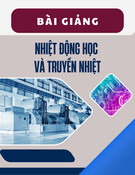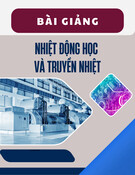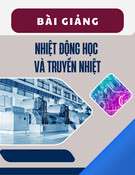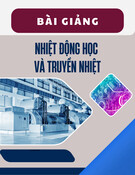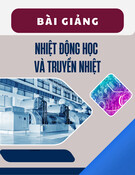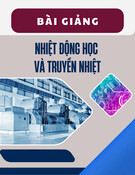
MIL-HDBK-1003/3
55
Simpo PDF Merge and Split Unregistered Version - http://www.simpopdf.com

MIL-HDBK-1003/3
56
Simpo PDF Merge and Split Unregistered Version - http://www.simpopdf.com

MIL-HDBK-1003/3
57
Simpo PDF Merge and Split Unregistered Version - http://www.simpopdf.com

Type HVAC Application
Centrifugal with backward Large HVAC systems where fan
inclined airfoil blades energy efficiency becomes
significant
Backward inclined centrifugal General HVAC
Forward inclined centrifugal Low pressure HVAC, mainly in
furnaces and package equipment
Vane axial General HVAC where compact size
and straight flow is wanted
Propeller Equipment room ventilation and
general ventilation for comfort
cooling
MIL-HDBK-1003/3
Table 7
Major Types of HVAC Fans
(7) Fan entrance (including vortex dampers),
(8) Fan discharge (based on discharge
configuration), and
(9) Velocity pressure loss (if fan outlet velocity
is lower than duct velocity).
b) Pressure Drop of Duct Systems. Pressure drop
calculations of duct systems shall include:
(1) Straight unlined or lined ductwork,
(2) Static pressure regain or loss due to
transitions,
(3) Fittings,
(4) Branch takeoffs,
58
Simpo PDF Merge and Split Unregistered Version - http://www.simpopdf.com

MIL-HDBK-1003/3
(5) Obstructions,
(6) Fire and smoke control dampers,
(7) Regulating dampers,
(8) Takeoff neck for air terminal devices,
(9) Air terminal devices, and
(10) Sound traps.
6.2.1.5 VAV Fan Selection. When selecting a fan for a VAV
system, check fan operating characteristics throughout the range
from minimum to maximum flow conditions operating conditions.
Fans should not be selected that will become unstable or
overloaded for any operating condition. Fan manufacturer shall
be AMCA certified. Refer to Appendix C for additional
information.
6.3 Economizer Cycle. The economizer cycle provides
cooling without refrigeration using outdoor air when outdoor air
dry bulb temperature is below a predetermined temperature where
the total heat of outdoor air is likely to be lower than that of
the return air. Economics of the economizer cycle is
particularly attractive for facilities that have interior zones
requiring year around cooling or for facilities with internal
heat gains higher than heat losses through the envelope of the
building. The economizer cycle should only be used with approval
of the EFD or EFA. Refer to pars. 8.2, 8.3, 8.4, and 8.5 for the
recommended control sequence.
6.4 Terminal Equipment. Conditioned air is delivered to
the room through terminal equipment such as grills, registers,
ceiling diffusers, etc. To achieve appropriate air diffusion
within the room, the terminal equipment should provide:
a) Mixing of conditioned air with room air, and
b) Counteraction of natural convection and radiation
effects within the room.
The scheme used to deliver conditioned air to the room
depends upon room size, geometry, exposures, and use patterns.
Outlet types include grills and diffusers mounted in or near the
ceiling and floor or low sidewall outlets. Outlet types should
be selected to adequately throw supply air across the room; to
provide good mixing to prevent drafts; to counter the buoyancy
effect of temperature differences; and to avoid obstructions such
59
Simpo PDF Merge and Split Unregistered Version - http://www.simpopdf.com

![Hệ thống HVAC và Dehumidifying: Tổng quan [Năm hiện tại]](https://cdn.tailieu.vn/images/document/thumbnail/2012/20120202/luly_meo1/135x160/hvac_and_dehumidifiying_systems_b_split_14_8134.jpg)
![Hệ thống HVAC và Dehumidifying: Tổng quan [Năm hiện tại]](https://cdn.tailieu.vn/images/document/thumbnail/2012/20120202/luly_meo1/135x160/hvac_and_dehumidifiying_systems_b_split_13_3651.jpg)
![Hệ thống HVAC và Dehumidifying: [Thêm từ mô tả/định tính để tăng CTR]](https://cdn.tailieu.vn/images/document/thumbnail/2012/20120202/luly_meo1/135x160/hvac_and_dehumidifiying_systems_b_split_12_8041.jpg)
![Hệ thống HVAC và Dehumidifying: [Thông tin chi tiết/Hướng dẫn/Lựa chọn]](https://cdn.tailieu.vn/images/document/thumbnail/2012/20120202/luly_meo1/135x160/hvac_and_dehumidifiying_systems_b_split_11_4149.jpg)
![Hệ thống HVAC và hệ thống hút ẩm: [Thông tin chi tiết/Hướng dẫn/Lựa chọn tốt nhất]](https://cdn.tailieu.vn/images/document/thumbnail/2012/20120202/luly_meo1/135x160/hvac_and_dehumidifiying_systems_b_split_10_7992.jpg)
![HVAC và Hệ thống Hút Ẩm: [Thêm thông tin chi tiết để tối ưu SEO]](https://cdn.tailieu.vn/images/document/thumbnail/2012/20120202/luly_meo1/135x160/hvac_and_dehumidifiying_systems_b_split_9_3668.jpg)
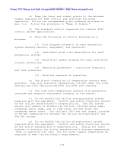
![HVAC và Dehumidifying Systems: Hệ thống điều hòa không khí và hút ẩm [chuẩn SEO]](https://cdn.tailieu.vn/images/document/thumbnail/2012/20120202/luly_meo1/135x160/hvac_and_dehumidifiying_systems_b_split_7_2859.jpg)
![HVAC và Dehumidifying Systems: [Mô tả chi tiết/Hướng dẫn/Đánh giá]](https://cdn.tailieu.vn/images/document/thumbnail/2012/20120202/luly_meo1/135x160/hvac_and_dehumidifiying_systems_b_split_6_8164.jpg)
![HVAC và Dehumidifying Systems: [Thêm thông tin chi tiết để tối ưu SEO]](https://cdn.tailieu.vn/images/document/thumbnail/2012/20120202/luly_meo1/135x160/hvac_and_dehumidifiying_systems_b_split_4_7836.jpg)
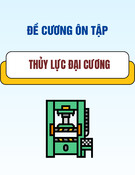
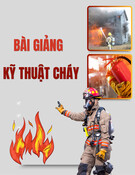
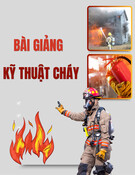
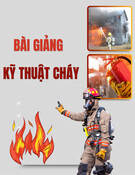
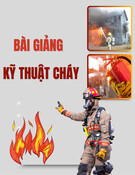
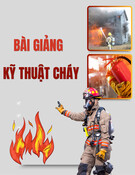
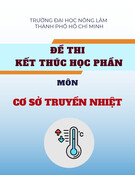
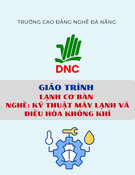
![Ngân hàng trắc nghiệm Kỹ thuật lạnh ứng dụng: Đề cương [chuẩn nhất]](https://cdn.tailieu.vn/images/document/thumbnail/2025/20251007/kimphuong1001/135x160/25391759827353.jpg)
